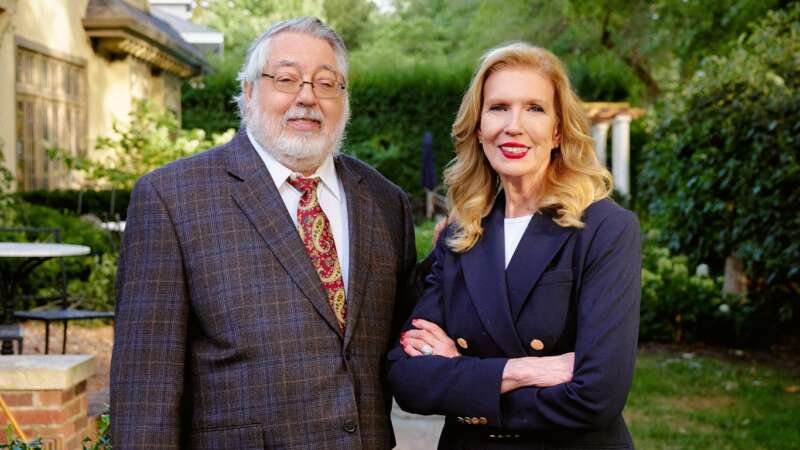From AI to virtual reality, Kansas State University Salina is programming experts in the latest future-focused technologies.
When it comes to technology, careers of the future demand unconventional thinking. And unconventional thinking requires an equally unconventional classroom.
Students at K-State Salina are gaining firsthand experience in extended reality and artificial intelligence, thanks to a high-tech classroom makeover through the Flip This Classroom project. The project, a drive to renovate 67 classrooms to enhance teaching and learning, created an immersive technology classroom where anything’s possible.
Finding a new future
In 2019, Michael Moran knew he wanted a degree in computer systems and that K-State Salina was the place to get it. He was right about Salina — but for another reason.
“I had always thought I wanted to be a software engineer,” said Moran, now a graduate student. “But when I learned about the integrated systems design and dynamics grad program and the cyber human systems graduate certificate, I became really, really interested in the exploration of human-technology interaction.”
Moran’s master’s program is a new offering on the Salina campus, where enrollment is up 9%. Designed with input from Fortune 500 companies and the U.S. government, the ISDD program equips students with the tools needed to design and develop technologically complex systems using various integrative modeling and simulation techniques.
“We were able to create an immersive technology classroom that houses our extended reality, or XR, lab,” said Michael Oetken, assistant professor and ISDD program coordinator. “It’s a space where students study and develop fully digital virtual reality applications, as well as augmented reality simulations that allow users to experience their physical surroundings blended with some virtual artifacts or media.”
Mastering the machines
Step inside and you’ll see this is no typical classroom.
Giant screens fill one of the walls, students in visors reach out to move invisible items and a bot is autonomously maneuvering around chairs. The classroom is stocked with XR headsets — including the top-of-the-line Meta Quest 2 and Meta Quest Pro, a Varjo unit and a Microsoft HoloLens — along with the computers required to operate them.
“If we’re going to be teaching students how to be on the cutting edge of all this, we need to have the technology that matches what the industry is using,” Oetken said.
High-end Varjo products feature advanced movement sensors and high-resolution cameras. They’re popular with companies such as Boeing, Lockheed Martin and Audi, which use their VR capabilities for design and manufacturing processes. K-State students use the HoloLens to create AR programs, such as adding simulated flight to training in a cockpit. They can even take it a step further with haptics — simulated sensory effects such as shaking or movement.
“We created an application that lets our flight students observe what the airspace looks like at the Atlanta airport — one of the busiest in the country,” Oetken said. “They can move around the airspace, touch an airplane to see the flight number and type of aircraft, watch planes landing and taking off, and basically just learn more than they would watching a video or reading a piece of paper.”
It’s hard not to get excited about learning in this new space, especially considering an upcoming addition. A Hollywood-based production company that creates immersive entertainment experiences for brands like Netflix, Lego and Disney will soon establish a location on the Salina campus.
“Pure Imagination Studios is working with others to wrap this experience into that cinematic universe,” Oetken said. “They’ll be integrated into our college here, working on projects both in and outside our curriculum.”
Training with tech
Back in the classroom, Moran is immersed in a project for an important K-State partner: the United States Air Force Academy’s astronautics department.
“They reached out for help creating a VR headset application that tracks live locations of satellites or other objects orbiting the Earth,” he said. “Our project allows you to touch these objects and see who owns them, their purpose, and their projected and previous pathways.”
This spring, students will assist another partner, Merck, with an XR solution to a training challenge. The company needs to offer year-round instruction on vaccine-production machinery that’s complex — and often inaccessible to employees.
“We thought a VR type of application would be the way to go for that,” Oetken said. “We can use CAD drawings and other information to build an interactive digital version of the equipment, then employees can familiarize themselves with it anytime, anywhere.”
Planning its potential
K-State’s plan for the XR classroom is still evolving as it considers undergraduate options and more instruction on artificial intelligence. And with Apple Vision rumored to be on the verge of overhauling human-tech interaction as we know it, a seat will be saved for spatial computing as well.
This industry is on the brink of something big.
“It’s like all those cool sci-fi things you grew up watching are actually starting to become reality,” Oetken said. “And it’s kind of like the Wild West with AI and its lack of rules. The world is learning what it’s capable of, and we need to stay on top of things to keep our students competitive in the job market.”
When it comes to what these students can do, the possibilities are “virtually” endless.
Help flip other K-State classrooms
Don’t let the classrooms of the past limit teaching and learning on our campuses today. You can contribute to Flip This Classroom and follow the progress here.



